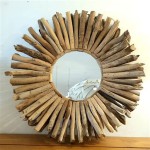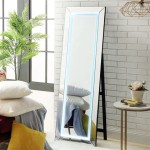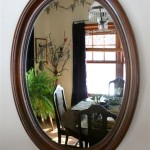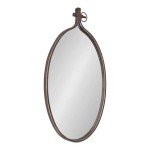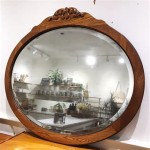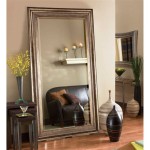The Best Way to Hang a Heavy Mirror on Lath and Plaster Wall
Hanging a heavy mirror on a lath and plaster wall can seem daunting, but with the right approach and tools, it's achievable. Lath and plaster walls are a common feature in older homes, known for their durability but also for their unique construction. This type of wall, unlike drywall, consists of a latticework of strips known as laths, coated with plaster. This construction creates a solid surface but also poses challenges when hanging heavier items. This article explores the best practices for hanging a heavy mirror securely on a lath and plaster wall.
Understanding Lath and Plaster Walls
Lath and plaster walls are a testament to older construction techniques. Their unique structure requires careful consideration when hanging items, especially heavy ones like mirrors. Here's why:
- Strength and Weakness: Lath and plaster walls are sturdy, but they can be brittle. The plaster is susceptible to cracking if unsupported, especially when subjected to significant weight.
- Hidden Framework: The lath strips within the plaster create a hidden framework. Locating these strips is crucial for finding stable points to hang items. This is where a stud finder comes in handy.
- Limited Anchoring: Unlike drywall, where screws can be easily driven, lath and plaster walls require specialized anchors to ensure secure hold. These anchors are designed to expand within plaster, providing a firm grip.
Choosing the Right Anchors
The key to hanging a heavy mirror securely on lath and plaster lies in selecting the right anchors. These anchors are specifically designed to provide a firm grip within the plaster, distributing weight evenly. Here are some popular options:
- Toggle Bolts: These are versatile anchors that work exceptionally well on lath and plaster. They feature a spring-loaded toggle that expands behind the wall when tightened, creating a secure hold.
- Drywall Anchors: Certain drywall anchors, especially those with wings or expandable designs, can also be used with lath and plaster. However, always check the anchor's weight capacity and compatibility with the wall material.
- Heavy-Duty Wall Anchors: These are specialized anchors designed for heavy items and come in various sizes to match the weight and thickness of the mirror. Look for anchors with a high weight capacity and a design that maximizes grip within the plaster.
Steps to Hang a Heavy Mirror
Once you've selected the appropriate anchors, follow these steps to securely hang your mirror:
- Locate Studs: Use a stud finder to locate the lath strips behind the plaster. Aim to hang the mirror directly onto these strips for maximum support.
- Mark Anchor Locations: Mark the wall where you plan to place the mirror. Using a level ensures the mirror will hang straight.
- Pre-Drill Holes: Before inserting the anchors, drill pilot holes slightly smaller than the anchor's diameter. Pre-drilling prevents the plaster from cracking.
- Install Anchors: Carefully insert the selected anchors into the pre-drilled holes. Tighten them securely, ensuring they are fully expanded within the plaster.
- Attach D-Rings or Hanging Wire: Secure D-rings or a hanging wire to the back of the mirror. These will attach to the anchors installed on the wall.
- Hang the Mirror: Carefully hang the mirror onto the anchors, ensuring it's centered and level.
Important Tips for Success
Here are some additional tips to ensure a successful installation:
- Test the Anchor's Strength: Before hanging the mirror, test the installed anchor's strength by gently pulling on the anchor. It should feel secure and not move easily.
- Consider Weight Distribution: For exceptionally heavy mirrors, consider using multiple anchors for increased support.
- Use a Level: Always use a level to ensure the mirror is hung straight. Misaligned mirrors can be visually unappealing and potentially unsafe.
- Seek Professional Help: If you're unsure about the process or dealing with a particularly heavy mirror, consider seeking help from a professional. Their expertise can ensure a safe and secure installation.
Hanging a heavy mirror on a lath and plaster wall requires a thoughtful approach and the right tools. By understanding the unique characteristics of this type of wall and selecting the appropriate anchors, you can confidently install your mirror and enjoy its beauty for years to come. Remember, safety is paramount, so never hesitate to seek professional help if needed.

Hanging Heavy Mirror On Plaster Walls 6 Steps With Pictures Instructables
Hanging Heavy Framed Mirrors Lath Plaster Walls The Picture Framers Grumble

How To Hang A Heavy Mirror Or Picture She Holds Dearly

Hanging Heavy Mirror On Plaster Walls 6 Steps With Pictures Instructables
How To Hang A Heavy Mirror On Drywall Without Damaging It Or The Wall Quora

How To Hang A Heavy Mirror Or Picture She Holds Dearly
Hanging Heavy Framed Mirrors Lath Plaster Walls The Picture Framers Grumble
Hanging Heavy Framed Mirrors Lath Plaster Walls The Picture Framers Grumble
Hanging Heavy Framed Mirrors Lath Plaster Walls The Picture Framers Grumble

How To Hang A Mirror With Wire Pictures Wikihow

